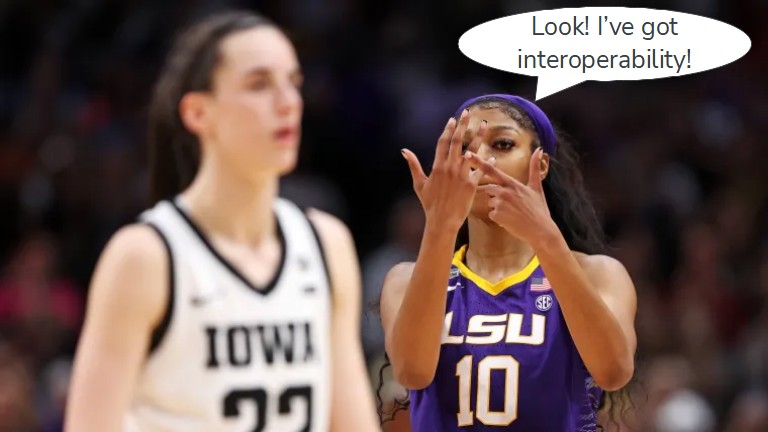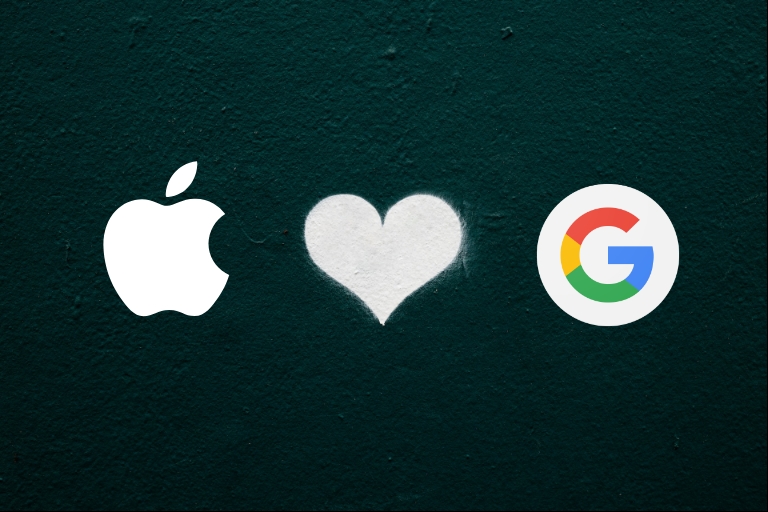Perception makes all the difference for interoperability

As the seconds ticked down on April 2nd, there were a lot of happy LSU Tiger fans—yours truly included. The women's basketball team was about to cap off a great season with the school's first ever basketball national championship. We the fans had suffered through disintegration in football and the steaming, corrupt mess of men's basketball. Finally, glory was ours again, and the whole nation would be talking about the Tigers' new crown!
Except, The Gesture Seen Around the World happened—and the crown took a backseat to an invisible ring. Naturally, the Twitterverse had a field day screaming about whether Angel Reese's parting shots at Caitlin Clark were confident trash talk or classless taunting. Did you see a champion to celebrate or a jerk to excoriate? Battle lines were drawn like we haven't seen since #TheDress.
What color is this integration?
In the healthcare IT world, we are thankfully more calm, civil, and tolerant, yet we still don't see the same things. There's an important lesson to learn from this episode on the significance of interpretation. While we strive to be an objective and technocratic industry, we can't lose sight of the difference our subjective beliefs and expectations make. In interoperability, for example, the word is tossed around endlessly as we bemoan the lack of "full" or "better" or "true" interoperability—yet when you dig into the details, everyone seems to have varying expectations of the ideal state.
Have we reached interoperability if we can exchange a wide range of clinical values, but we can't transmit guarantor and insurance details? Does interoperability mean that we can only pull data from a source, or must we also be able to write back for a system to be interoperable? What are the requirements around bulk data transfer and data frequency for us to be satisfied with the state of interoperability?
IYKYK
Poll a large group of attendees at HIMSS next week, and you're likely to get a variety of answers to those questions. That's okay and expected. Try as we may to distill interoperability down to a technical definition, I doubt it will ever feel complete. Interoperability is not some static, black and white noun. I view it as a social construct like justice or fairness, something that evolves over time in its scope and meaning. We can't perfectly define it, but situation by situation, we know when it's there and when it isn't.
Our understanding of interoperability derives from our various individual perceptions which, when mixed together, produce a coherent set of norms for the community at large. Those norms can be influenced by government action, milestone events, prominent voices for change, or even financial incentives. None of this is wrong or bad, but it does mean we need to accept that the climb towards interoperability's summit can never end. It also means that when speaking about interoperability, we should clearly outline our individual perceptions of it, so that everyone is clear on your perspective and how it differs from their own. Before you assert that interoperability is or isn't measuring up, you need to show us your ruler.
How do I gauge interoperability? I see the ultimate state as one that overcomes the three core challenges of data exchange. When methods for data transmission are highly available and comprehensive enough to overcome the friction caused by complexity and fragmentation, we're in a good spot. In more tangible terms, that means interoperability exists when we can exchange all the primary data types—clinical, financial, operational, and administrative—both individually and in bulk, on demand, in either direction between two systems. The technology used (e.g., APIs vs HL7) or the exact routing mechanism (e.g., point-to-point versus over a network) isn't as important as getting the desired amount of data when and where we want, so that it can be understood and acted upon in the same way regardless of the system it lives in. This is my belief today, but it may change next year, and it is no more correct than yours. Together, however, these beliefs help push our progress and our expectations further and further along.



